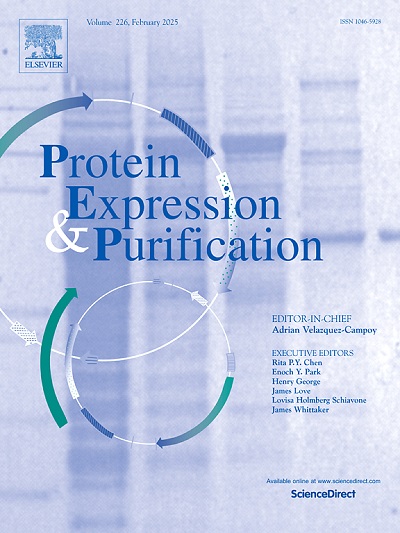导航前沿:单克隆抗体纯度控制的进展
IF 1.2
4区 生物学
Q4 BIOCHEMICAL RESEARCH METHODS
引用次数: 0
摘要
本文综述了单克隆抗体(mAb)纯度评估的发展前景,重点介绍了分离技术的进展,旨在提高杂质检测、鉴定和定量的分辨率、速度和精度。传统的方法如SDS-PAGE、等电聚焦电泳和尺寸排除色谱是基础工具,而先进的色谱技术,包括各种模式的高效液相色谱(HPLC)和毛细管电泳(CE),为分析单抗的结构完整性和杂质提供了改进的能力。这些技术根据样品的物理化学性质(如大小、电荷、等电点、疏水性和结构)分离样品中的不同成分。综述了传统分离技术和先进分离技术的原理和进展,并阐述了它们在大规模生产单抗和抗体-药物偶联物(ADC)分析中的应用。色谱的创新,如表面多孔颗粒和新型固定相,解决了带拓宽和蛋白质吸附等挑战。本文章由计算机程序翻译,如有差异,请以英文原文为准。
Navigating the Frontier: Advances in monoclonal antibody purity control
This review explores the evolving landscape of monoclonal antibody (mAb) purity assessment, highlighting the advancements in separation techniques aimed at improving resolution, speed, and precision of impurity detection, identification, and quantification.Traditional methods such as SDS-PAGE, isoelectric focusing electrophoresis and size-exclusion chromatography serve as a foundational tool, while advanced chromatographic techniques, including diverse modes of high-performance liquid chromatography (HPLC), and capillary electrophoresis (CE), offer improved capabilities for analyzing mAb structural integrity and impurities. These techniques separate different constituents in the samples based on their physicochemical properties such as size, charge, isoelectric point, hydrophobicity, and structure. The review discusses the principles and progressions of both traditional and advanced separation techniques and demonstrates their applications in large-scale mAb production and antibody-drug conjugate (ADC) analysis. Innovations in chromatography, such as superficially porous particles and novel stationary phases, address challenges like band broadening and protein adsorption.
求助全文
通过发布文献求助,成功后即可免费获取论文全文。
去求助
来源期刊

Protein expression and purification
生物-生化研究方法
CiteScore
3.70
自引率
6.20%
发文量
120
审稿时长
32 days
期刊介绍:
Protein Expression and Purification is an international journal providing a forum for the dissemination of new information on protein expression, extraction, purification, characterization, and/or applications using conventional biochemical and/or modern molecular biological approaches and methods, which are of broad interest to the field. The journal does not typically publish repetitive examples of protein expression and purification involving standard, well-established, methods. However, exceptions might include studies on important and/or difficult to express and/or purify proteins and/or studies that include extensive protein characterization, which provide new, previously unpublished information.
 求助内容:
求助内容: 应助结果提醒方式:
应助结果提醒方式:


